For me, these are straight out of a fairy tale.
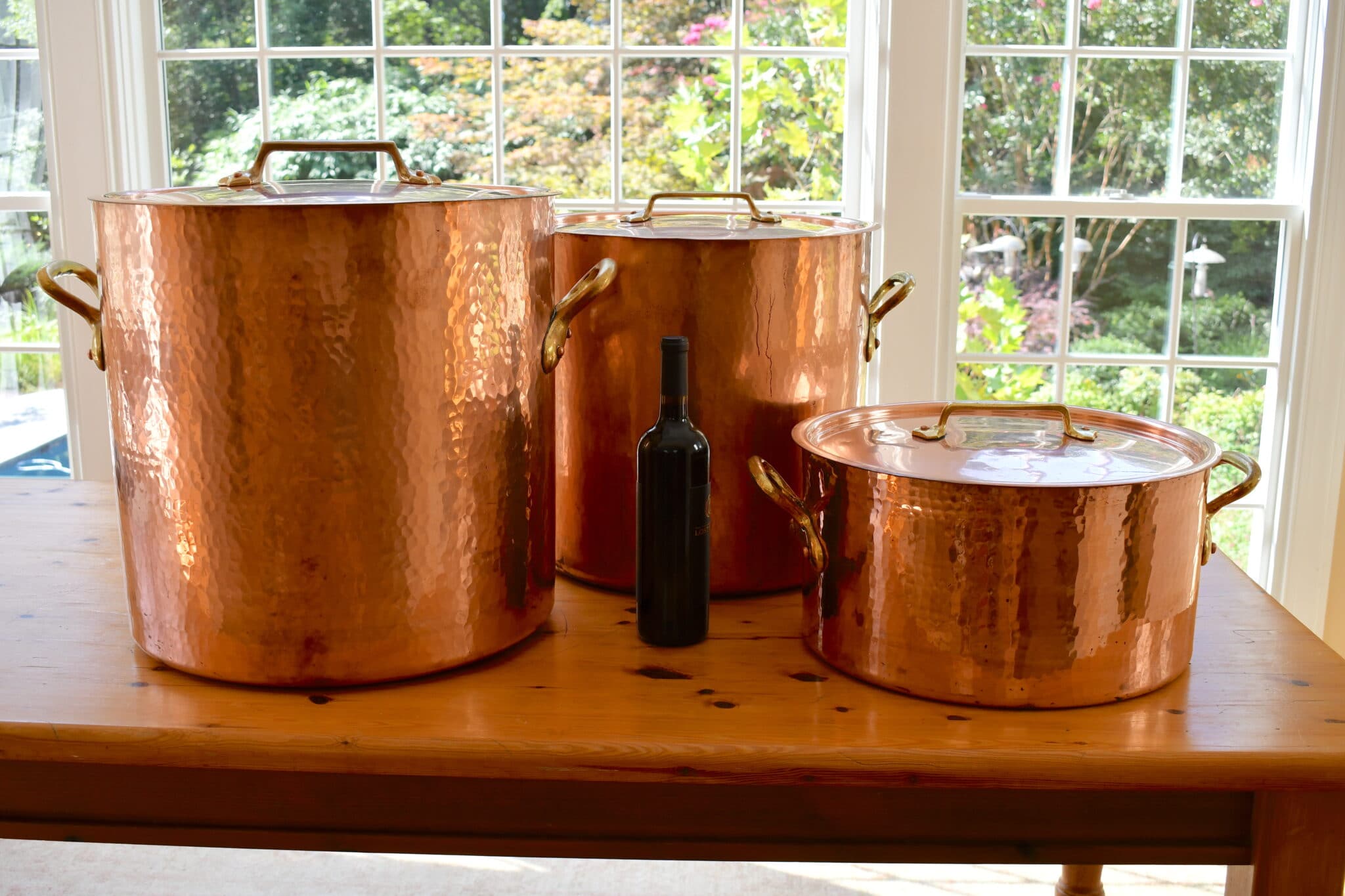
| Type | Tin-lined stewpot and stockpots in hammered finish with brass handles fastened with copper rivets | ||
| French description | Bassine à ragoût et marmites traiteurs étamés et martelés avec poignées en laiton munies de rivets en cuivre | ||
| Dimensions | Baby Bear
40cm diameter by 21cm tall |
Mama Bear
40cm diameter by 40cm tall |
Papa Bear
44cm diameter by 44cm tall |
| Thickness at rim | 2.6mm | 2.2mm | 2.5mm |
| Weight | 9190g (20.2 lbs); 11470g (25.2 lbs) with lid |
14796g (32.6 lbs); 17066g (37.6 lbs) with lid |
20130g (44.4 lbs); 23064g (50.8 lbs) with lid |
| Stampings | Bonjour Made in France | Bonjour Made in France | Villedieu France |
| Maker and age estimate | Mauviel; 1970s-1980s (all three) | ||
| Source | Private sale (all three) | ||
Once upon a time there was a lady who had three big beautiful copper pots. One day she hired a chef to cook a fancy dinner for a party, and in exchange, she offered the three pots as payment. Of course the chef said yes. He loved them because they reminded him of the nice lady and the wonderful party, and over the years he used them to make stock and batches of stew. But when the time came for him to pass them along to their next owner, he faced a dilemma: if someone far away bought them, how on earth was he supposed to mail these huge things? The biggest one weighed fifty pounds! What would it cost to ship them? And even if he found boxes big enough, would they make it safely? He imagined the big boxes being shoved and dropped. It would break his heart if he didn’t pack them well enough and they arrived crushed or dented!
But as luck would have it, he lived not too far from an avid copper collector who wanted all three of them. Instead of packing the pots up in boxes, he put them in his car and drove them to meet their new owner. All three pots had a safe and easy journey to their new home where they lived happily ever after.
Yes, I am that collector, and I can’t help but think of this story as a fairy tale come true. Were it not for my fortuitous proximity to the chef who owned them I would not have been able to afford them. Pieces this big need to be packed very carefully indeed for shipping (this is what can happen to big pots that aren’t packed well) and the costs are significant. I don’t often see pieces of this scale on the online marketplaces and I suspect that the extra shipping costs on top of their purchase price put them out of reach for most buyers (myself included). I think sellers know this and are much more willing to put their time and effort into marketing items of more manageable size. And so I never imagined that not just one but three pieces of this scale would become available, and even better, close enough to avoid the hassle and risks of shipping.
Here they are when I bought them home. Their former owner kept them in fine condition — there are no dents or damage, and only a few minor surface scratches from use and storage. They were working pots for him and so he did not keep them polished, and my first task was to give them a good once-over with copper cleaner to take some of the tarnish off and see what was underneath. They won’t fit in my sink so I took them outside into the driveway. I placed an old doormat underneath them to help protect from scratches.
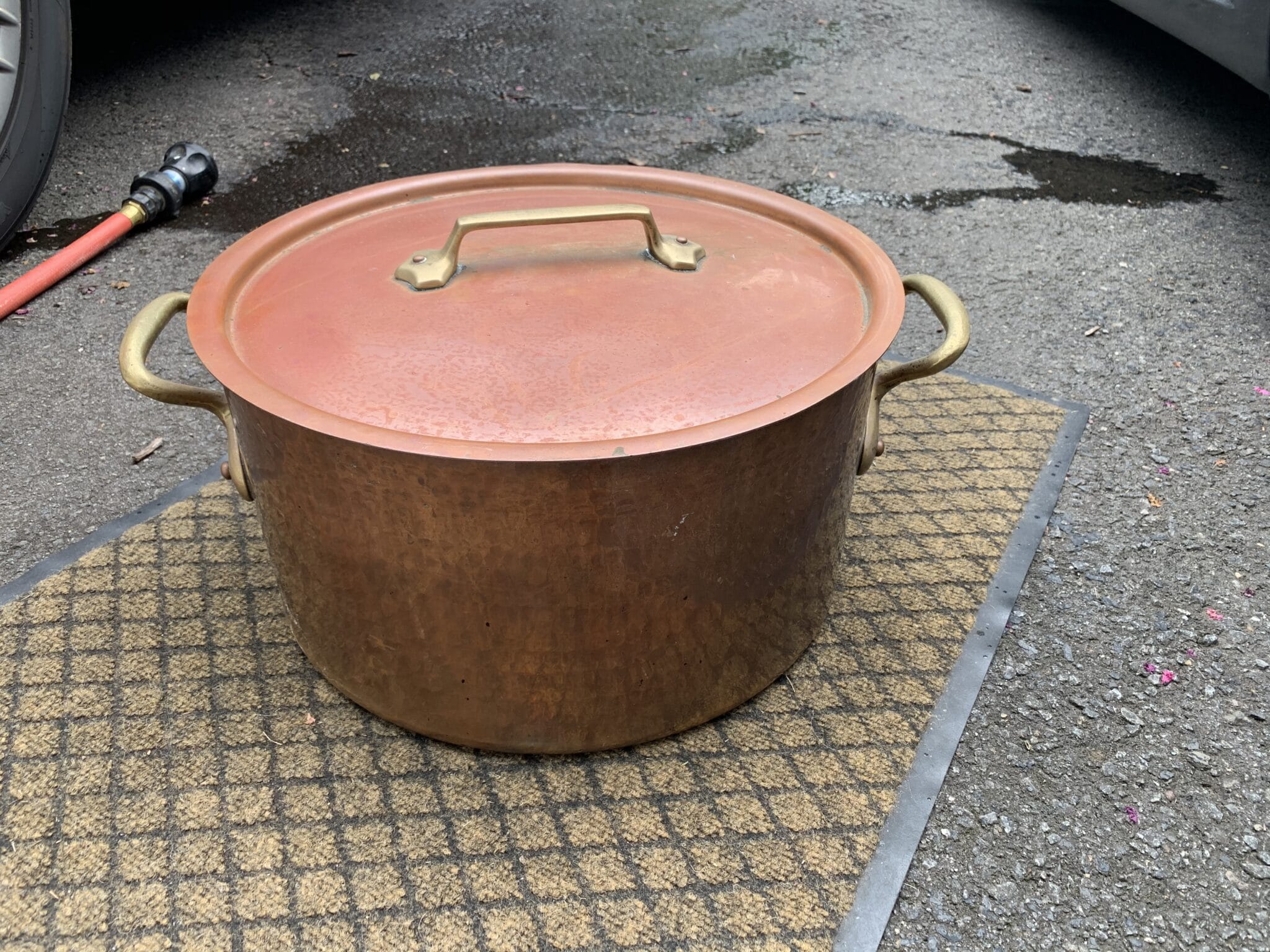
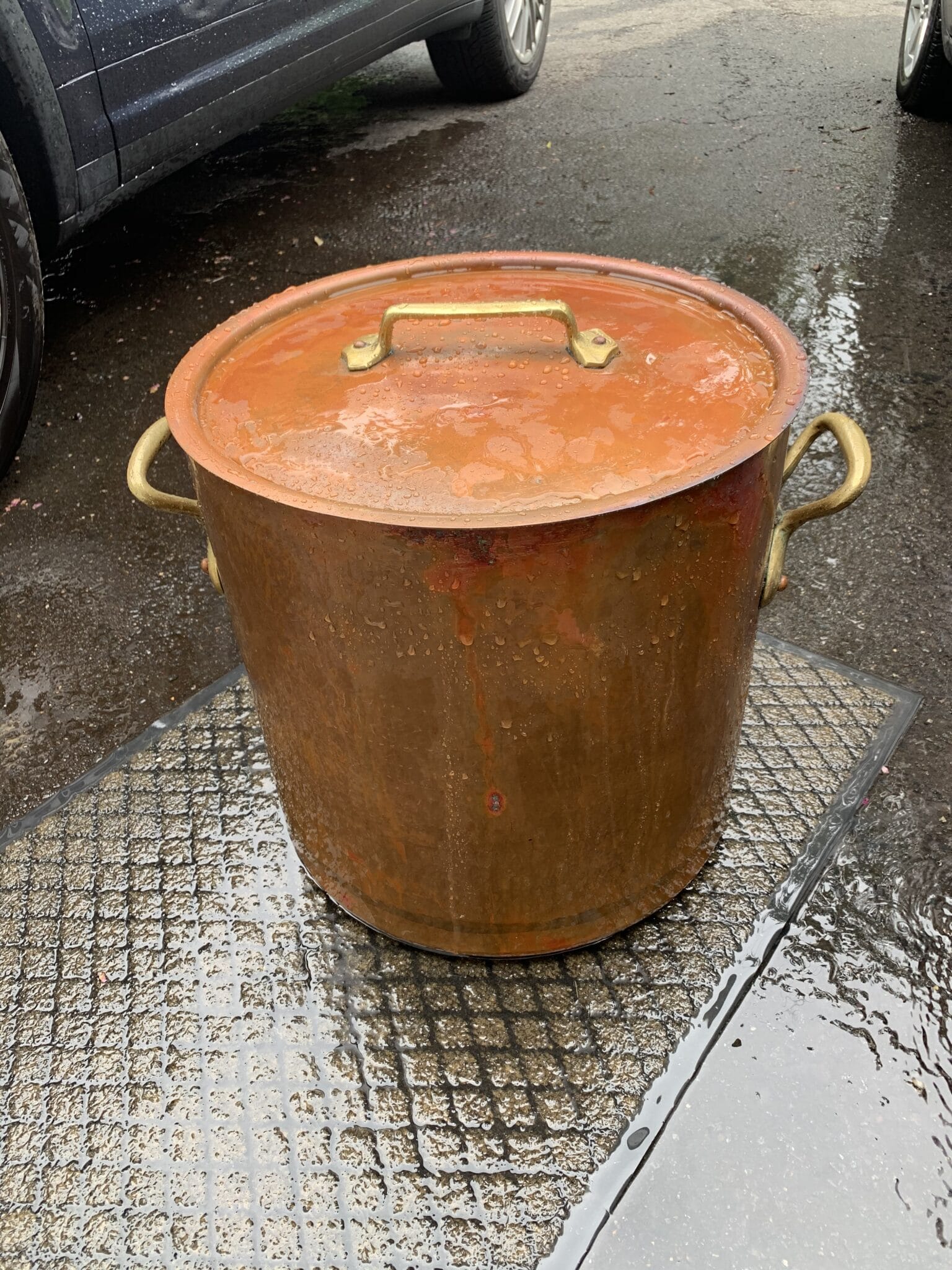
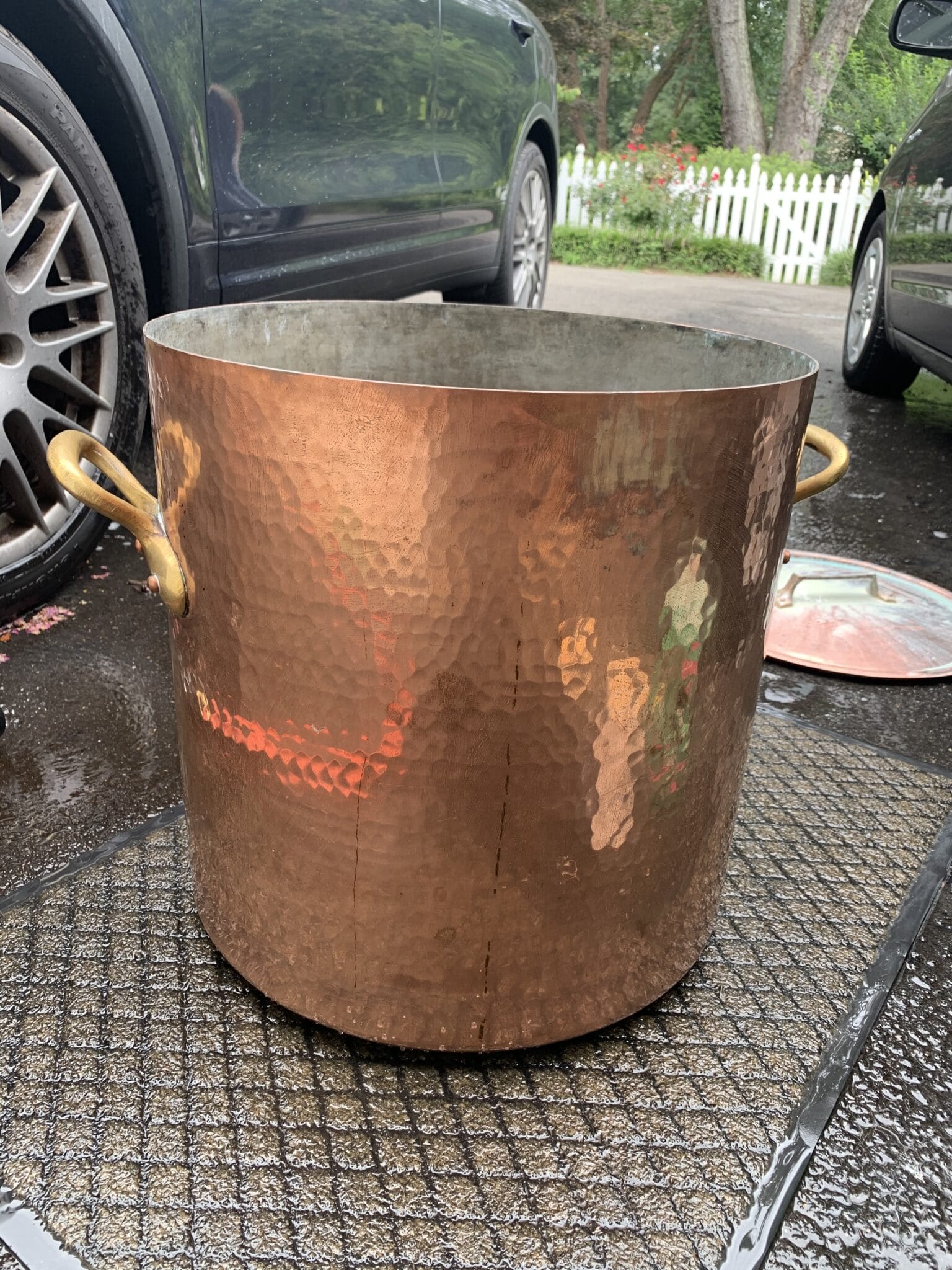
From the tarnish emerged three gorgeous pots and their lids. I immediately recognized them as a family and named them Papa Bear, Mama Bear, and Baby Bear.
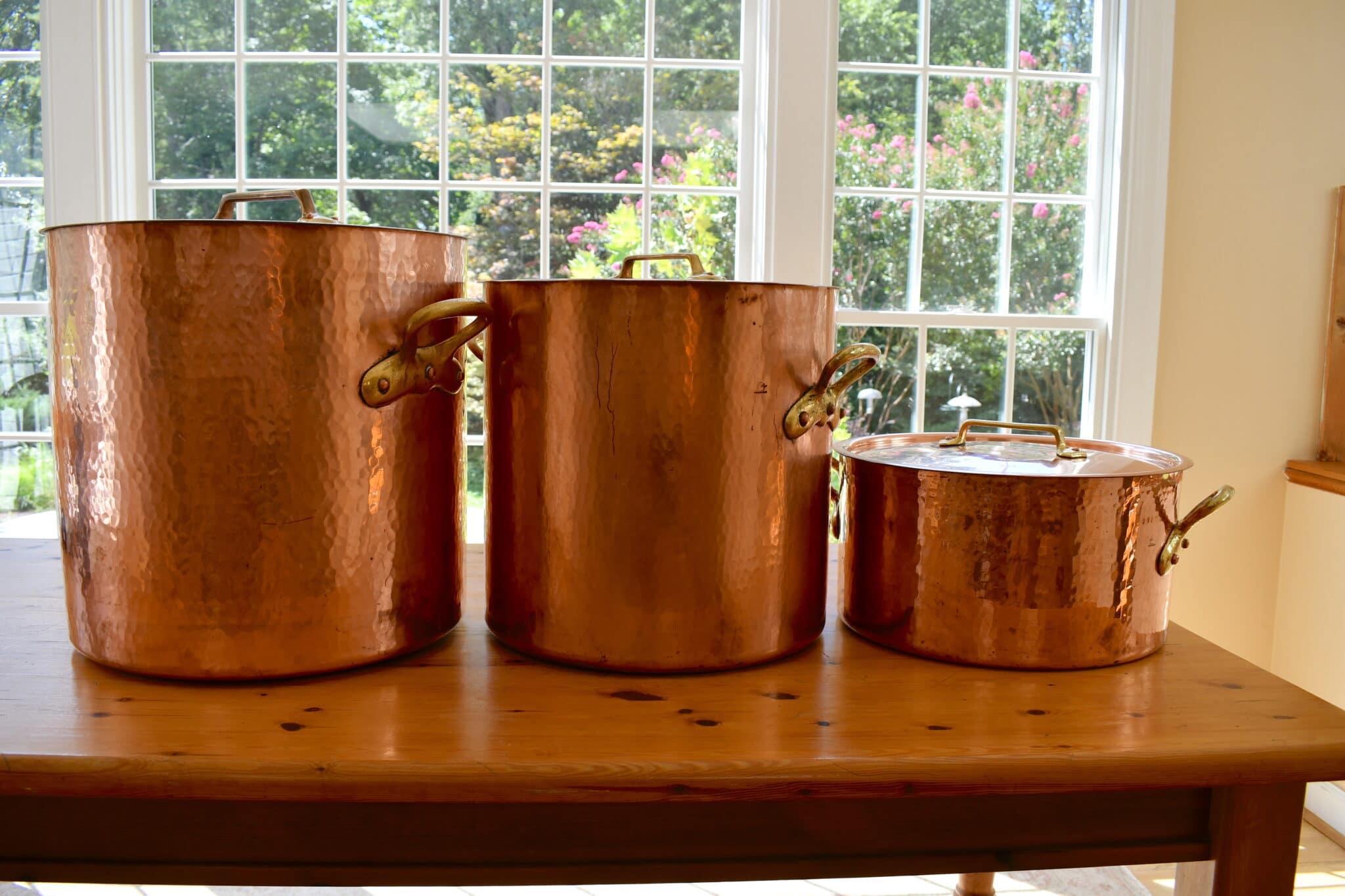
These are all 1980s-1990s Mauviel by my estimation: the 40cm stewpot and 40cm stockpot (Baby and Mama Bear, respectively) are stamped for BonJour, and the 44cm stockpot (Papa Bear) is stamped simply “Villedieu France,” which I believe is a 1980s-1990s Mauviel mark. BonJour imported Mauviel copper during the 1980s and 90s, and 40cm may have been the upper end of the size range they offered; I suspect Papa Bear at 44cm was likely a special order direct from Mauviel and given a generic origin stamp at the factory.

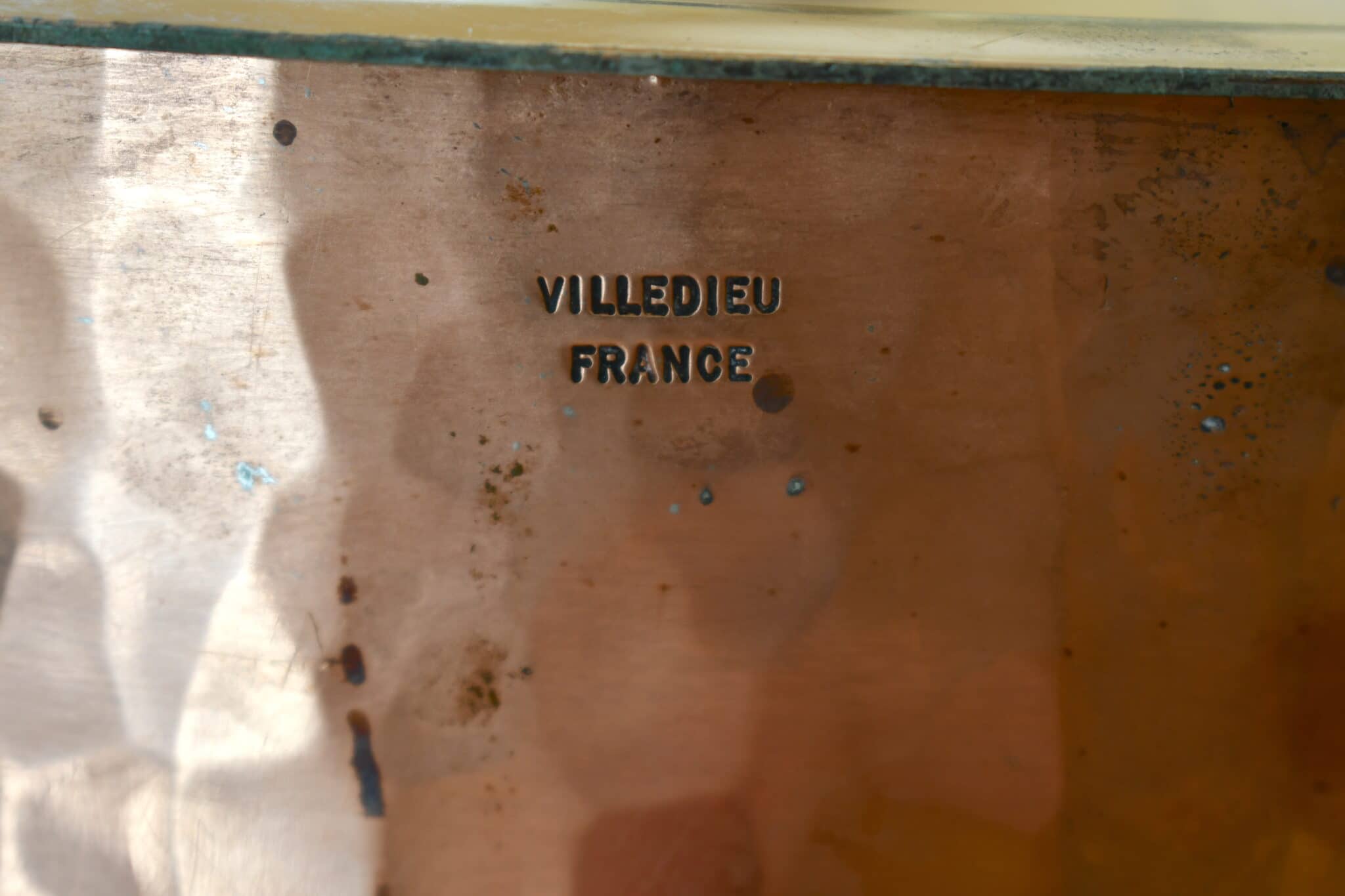
The stewpot is pressed from a single sheet of copper but the stockpots are pieced together. Stockpots have been assembled this way since the era of dovetailing but modern welded pieces such as these have two important differences. The majority of dovetailed pieces are joined in the base — that is, the base piece is a flat disk and the sidewalls are bent inward and fused to it. But the base piece of a modern stockpot is pressed into a shallow cup and the sidewalls are slid neatly over its rim and welded in place. I’m not sure why this change was made: was it preferred to hide dovetails under the base to give the sides a smoother and more attractive appearance? Were dovetails better able to manage perpendicular pressure than lateral pull? If you can explain this, I’d love to learn.
The second difference is that the handles of a dovetailed stockpot are usually (if not always) positioned to straddle the side seam, while the handles on welded pieces are placed with no regard to seam alignment. (Papa Bear’s side seam is under the handle while Mama Bear’s side seam is between handles.) I have a thought as to why: perhaps in the dovetailed era the riveted handle was intentionally positioned to help reinforce the seam by pinning the two sides together. Welded seams are much stronger and don’t need reinforcement and so the handles could be placed elsewhere.
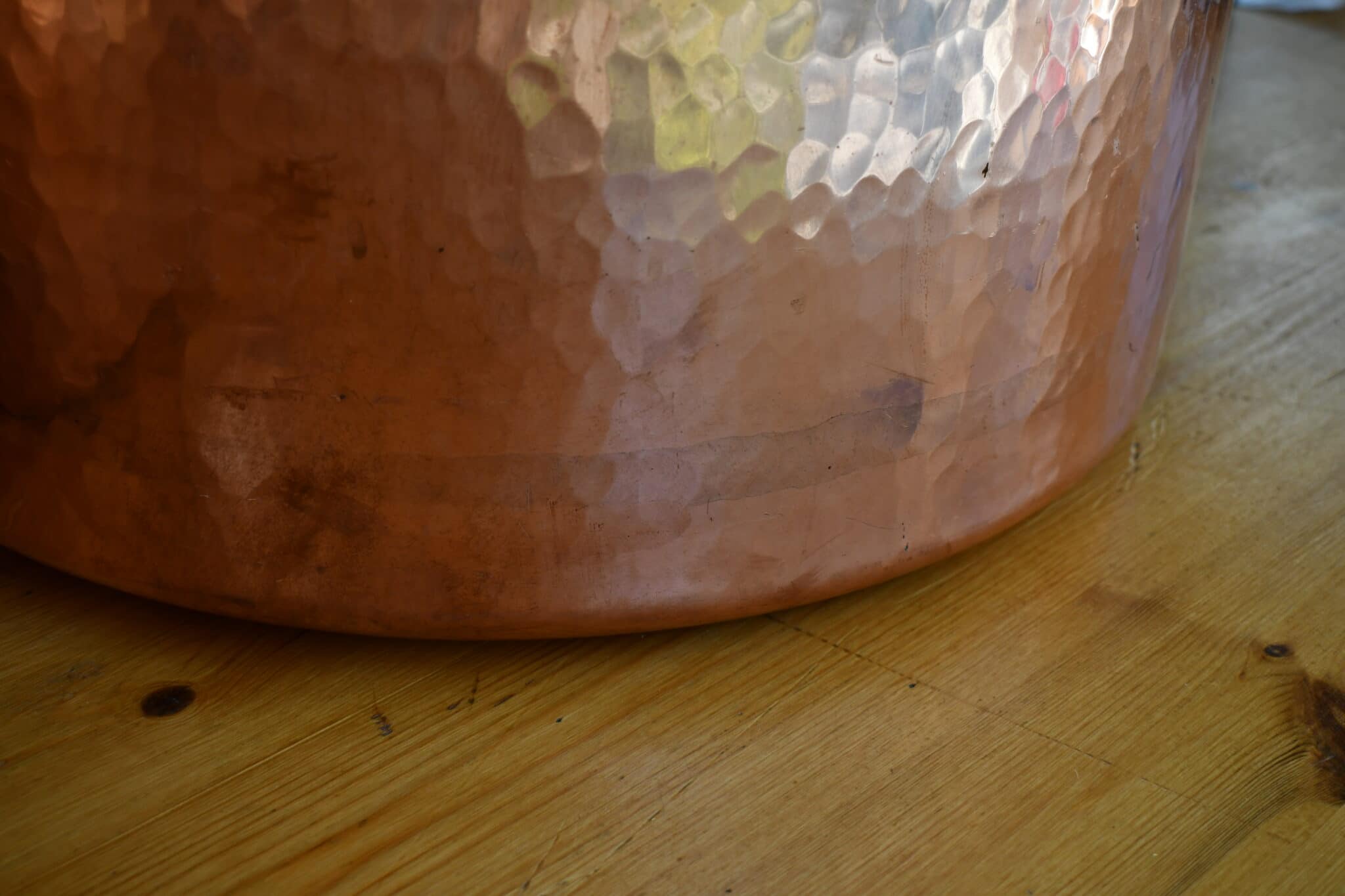
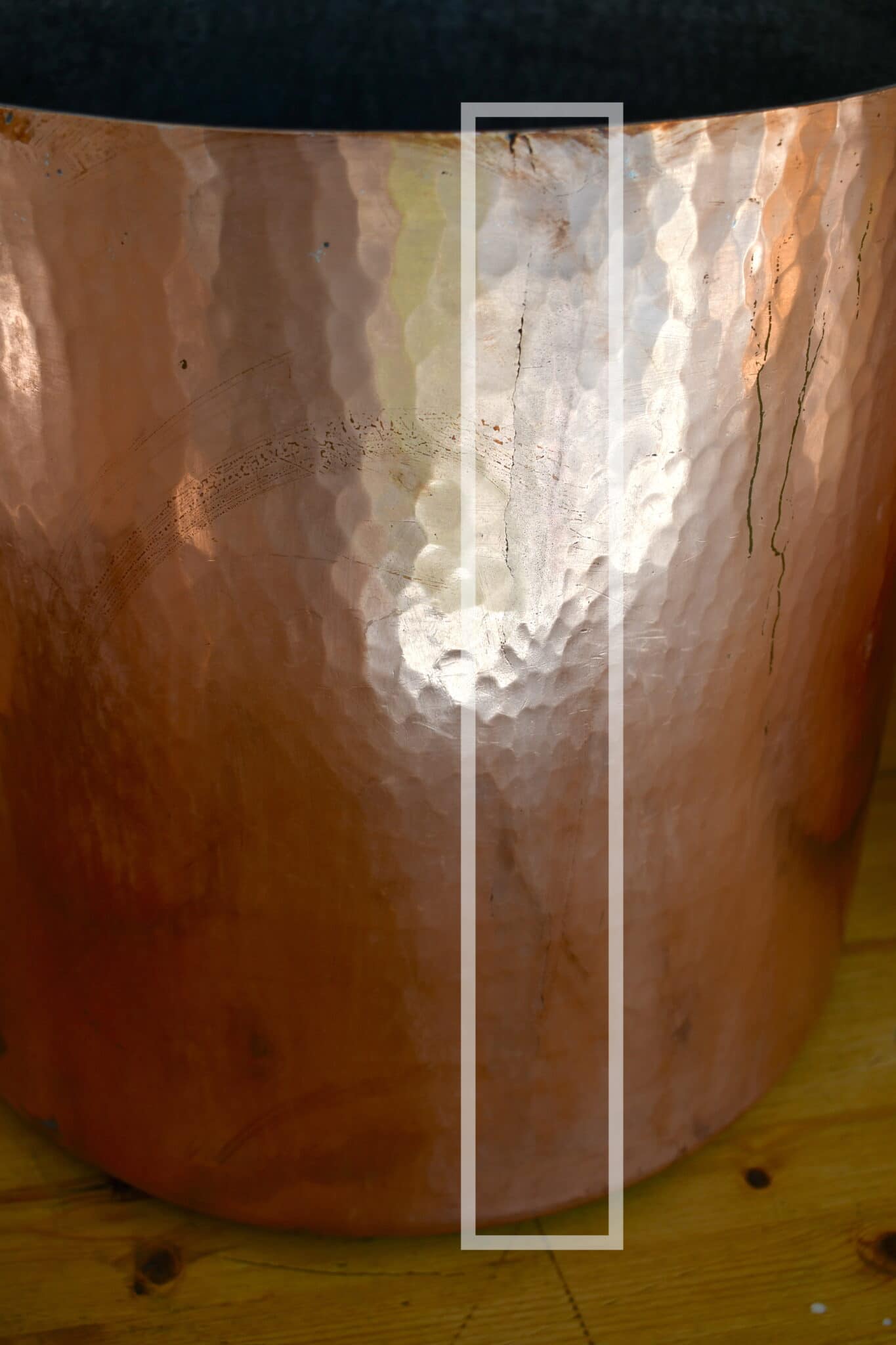
Baby Bear and Mama Bear — the two pieces stamped for BonJour — have identical handles. Papa Bear’s handle looks to be the exact same shape but made of a different brass with a slight greenish tone. I still think they are all three Mauviel make, but the different tone of the metal of Papa Bear’s handle suggests to me that he was made at a different time than Mama and Baby Bear.
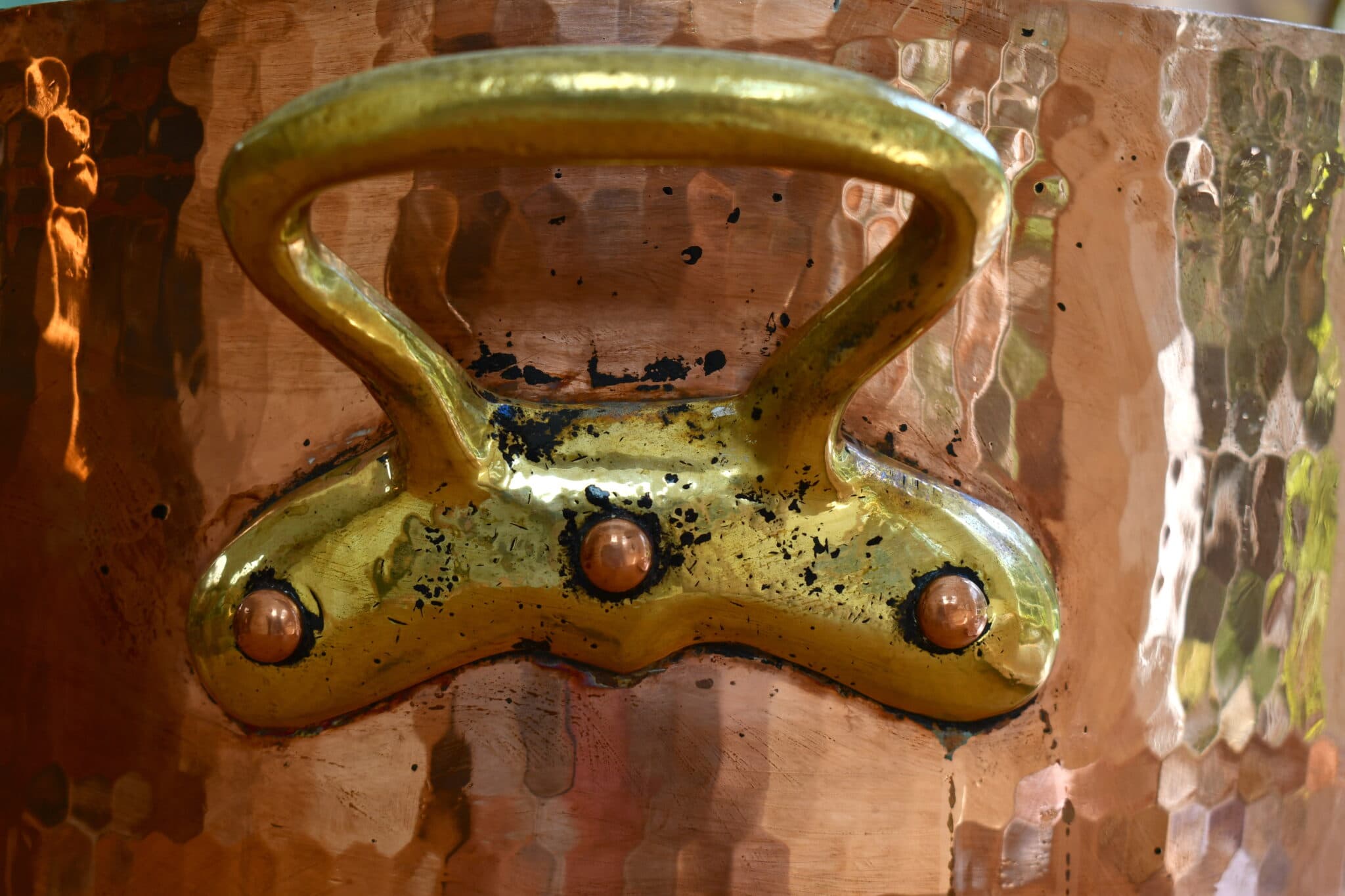
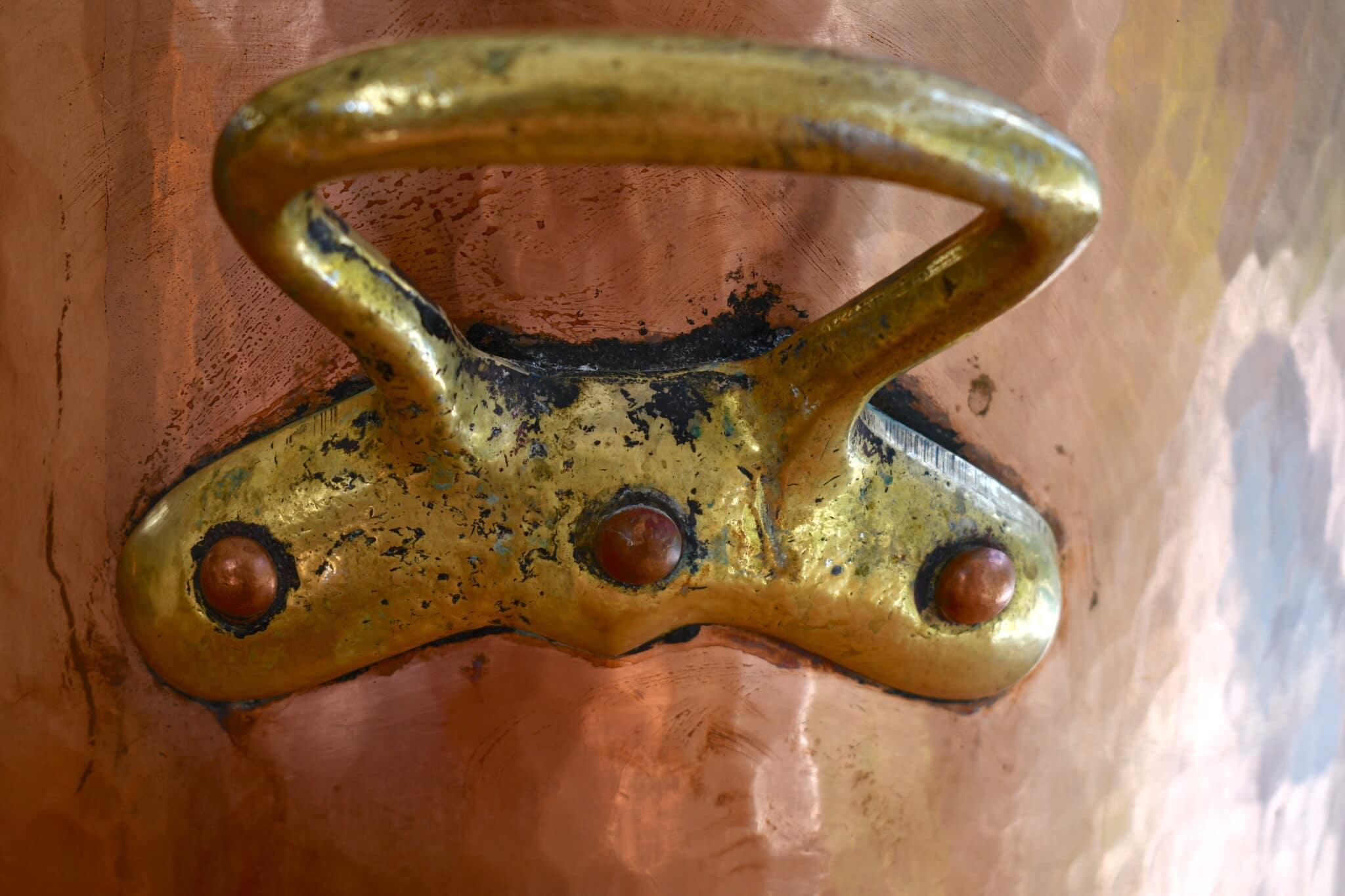
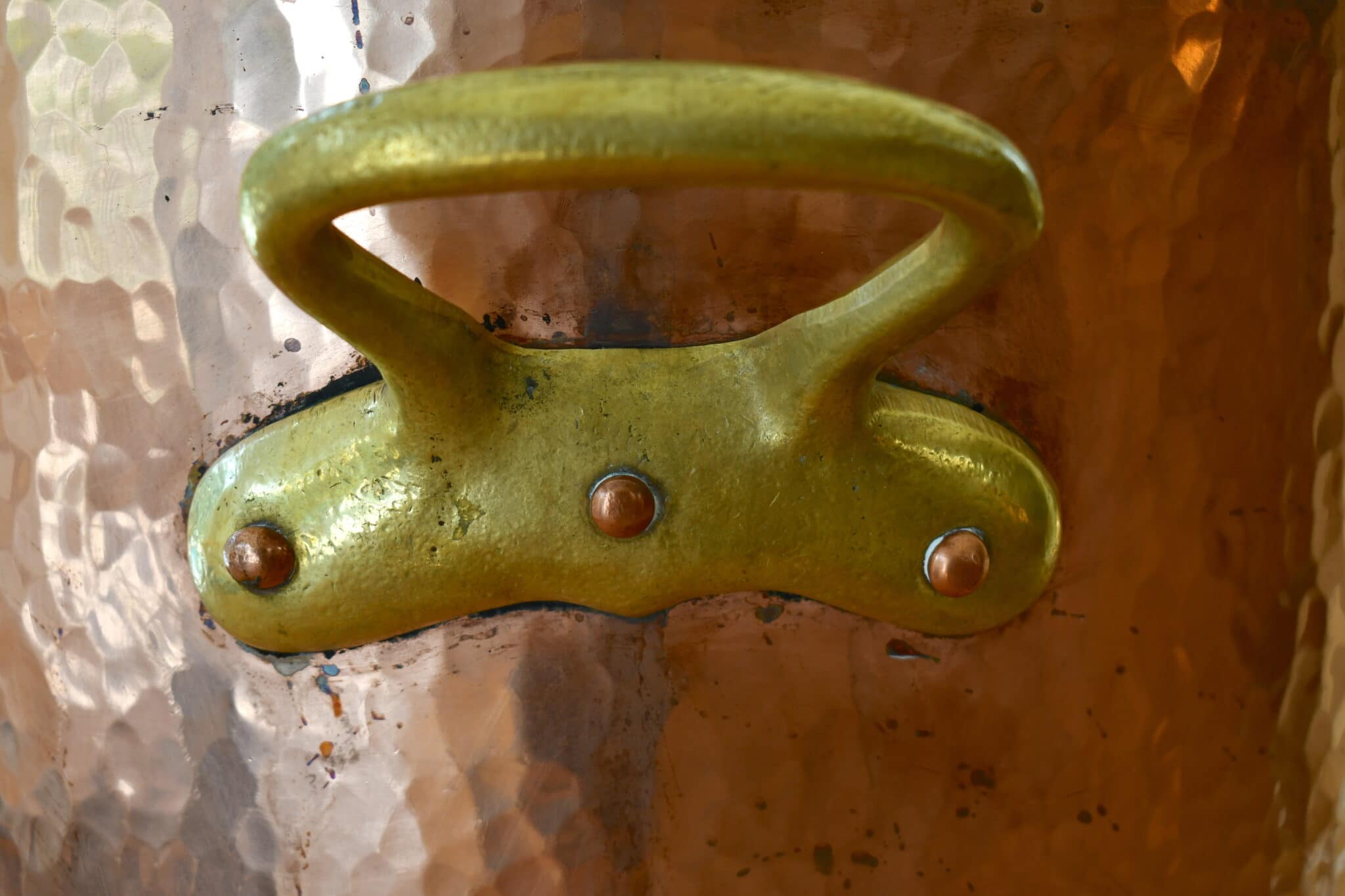
The lid handles are each subtly different. I don’t get too hung up on original lids in the modern era — the irregular dimensions of hand-cut 19th and early 20th century pans meant that many needed to be fitted with a custom-sized lid, but the advent of machine cutters and presses produced standardized lids and pots that fit each other perfectly. I suspect these lids were made en masse in different production runs.

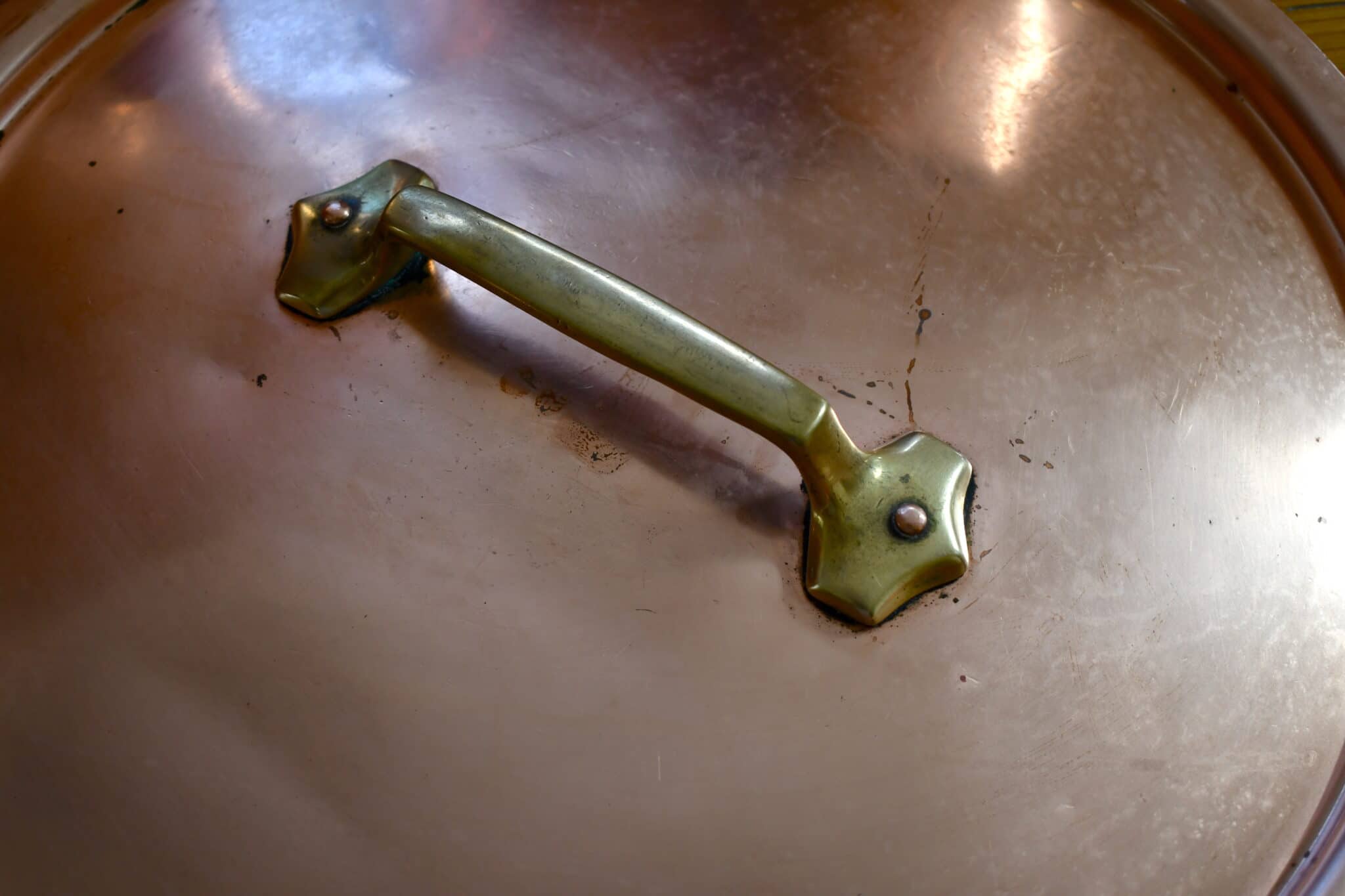
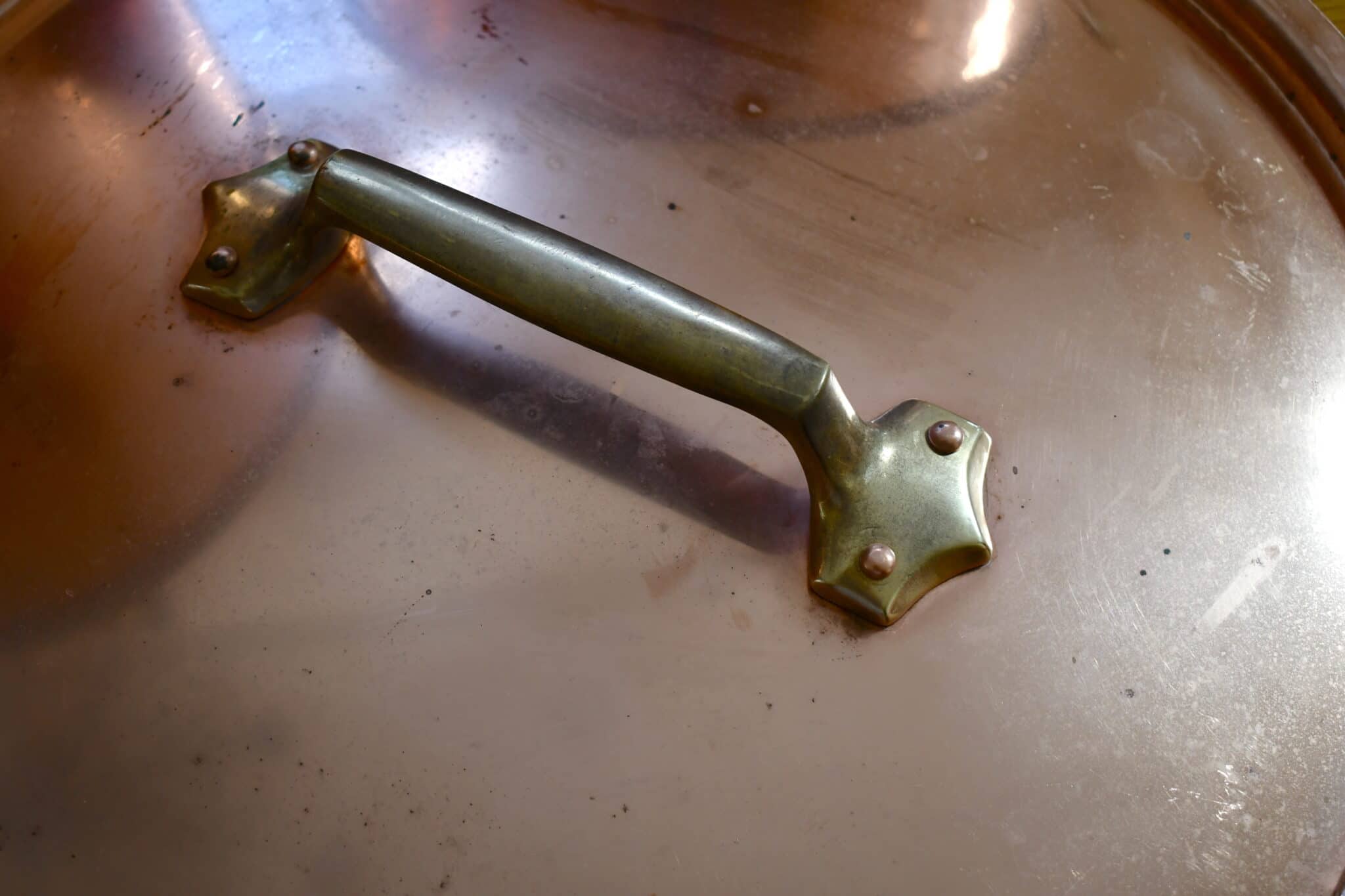
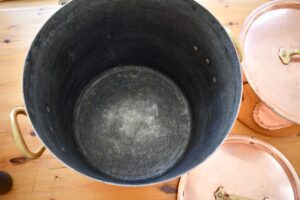 I plan to have these refurbished. The tin inside is darkened and there is a bit of copper showing on the rivets. Papa Bear’s base is also slightly bowed and would benefit from some flattening. And I would love to see them all with a proper polish. Baby Bear has a nice shine already but Mama and Papa could use some time on the buffing wheel. My plan is to drive them to a retinner but that will take some logistical planning and is likely at least a few months away.
I plan to have these refurbished. The tin inside is darkened and there is a bit of copper showing on the rivets. Papa Bear’s base is also slightly bowed and would benefit from some flattening. And I would love to see them all with a proper polish. Baby Bear has a nice shine already but Mama and Papa could use some time on the buffing wheel. My plan is to drive them to a retinner but that will take some logistical planning and is likely at least a few months away.
In the meantime I will enjoy them as they are. I am delighted to have them, and so pleased with how beautiful they are with only a quick cleaning.
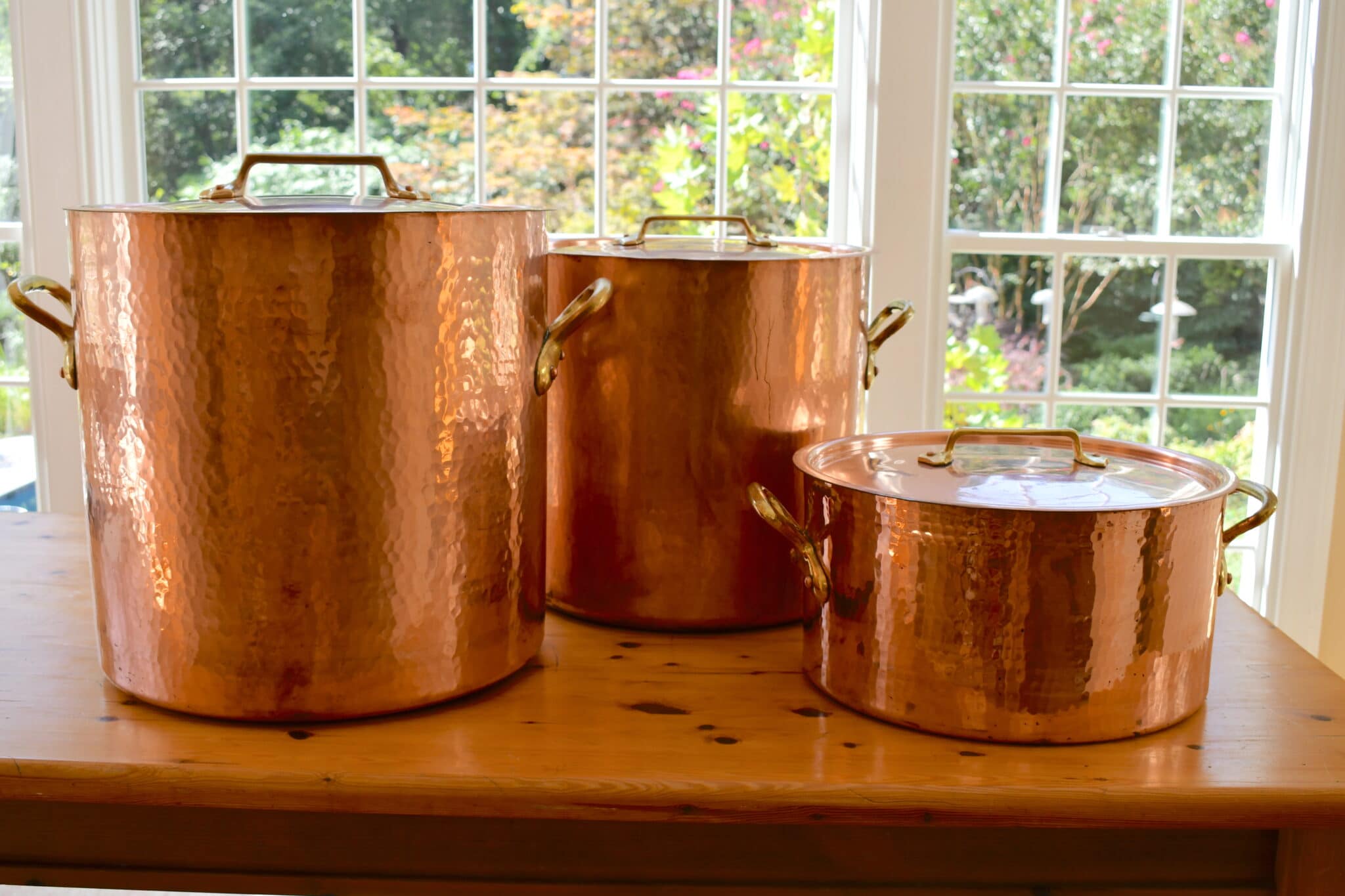
And my earnest thanks to the kind chef who was gracious enough to drive to meet me. It made me happy to see how much care he devoted to them, and that he took time out of his day to see them safely off to their new home. That made it possible for me to keep them together, and I’m fortunate and grateful to be able to do so. Each is a rare piece on its own, but to see the family together — and to be able to keep them that way — is something special. Almost a little magical, one could say.
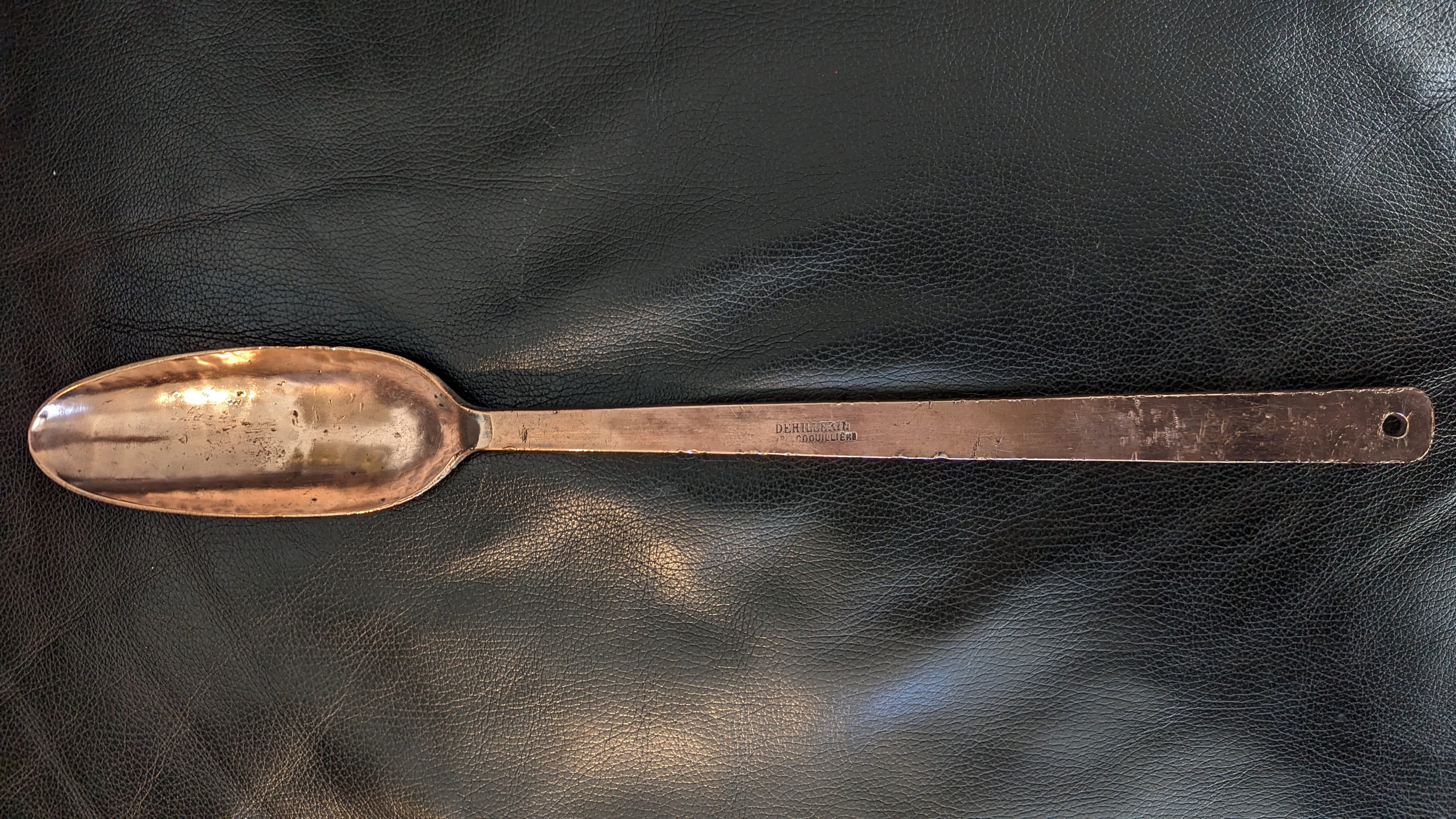

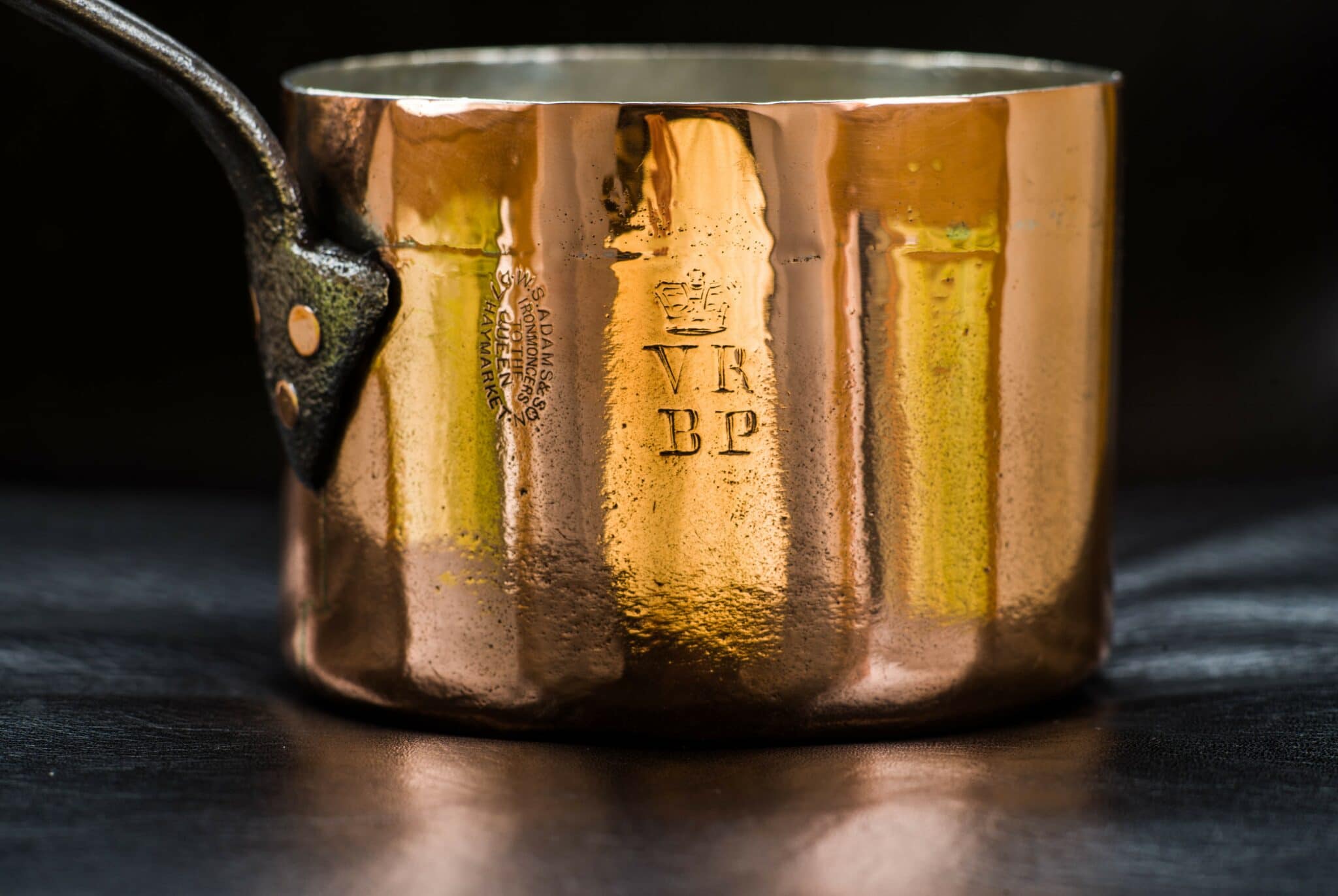

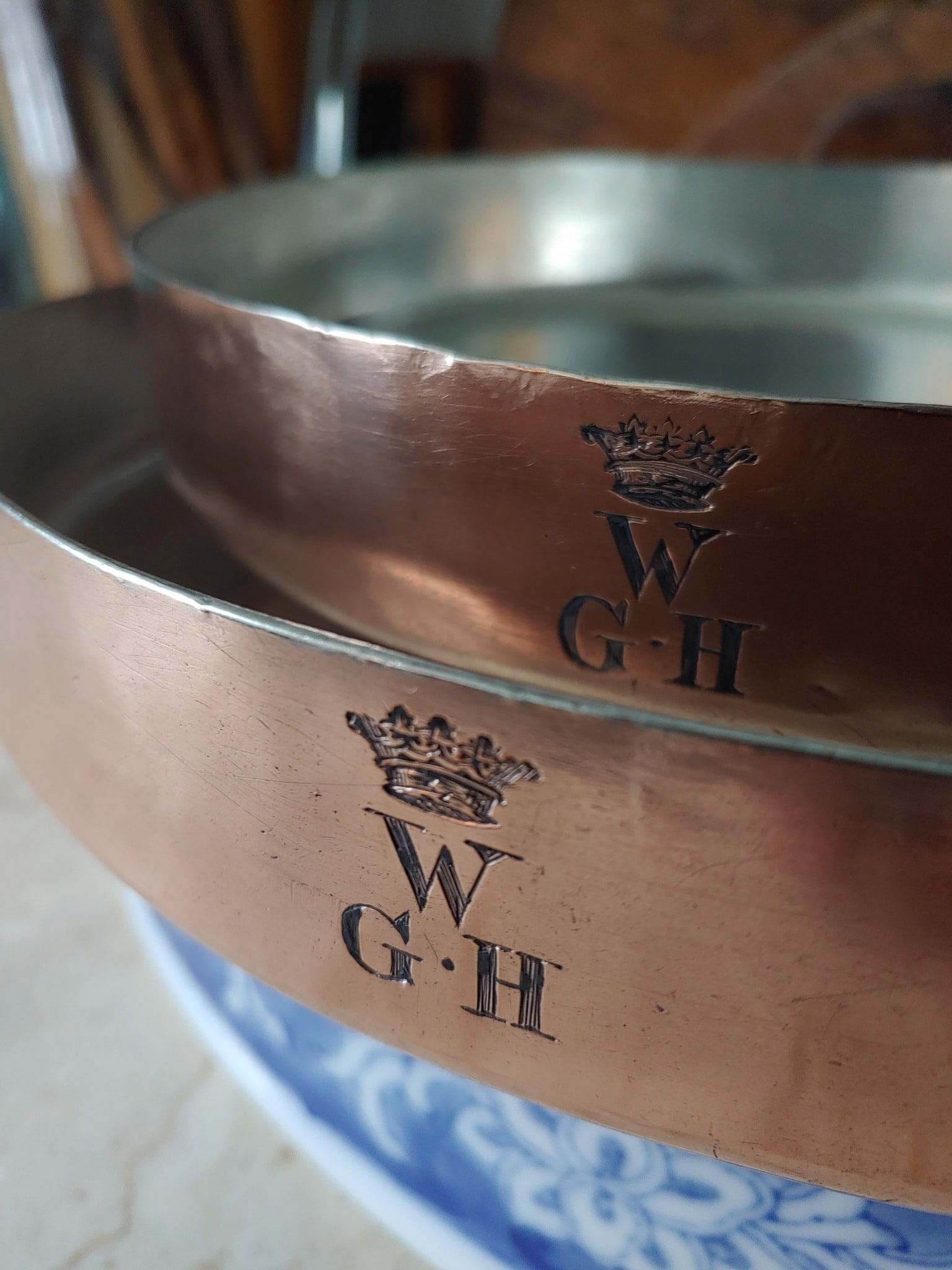
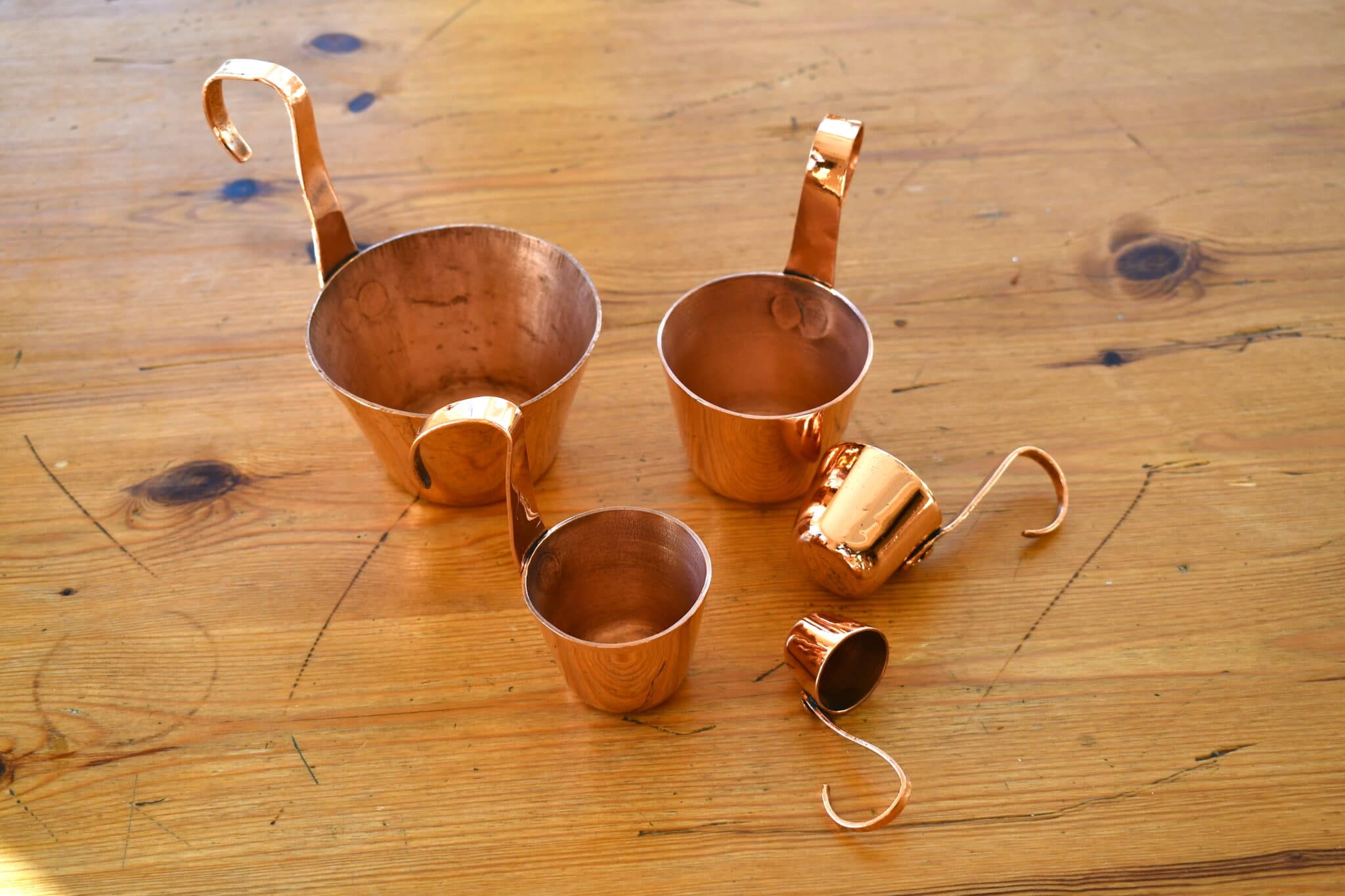
Congratulations. Chapeau bas!
Wonderful additions to your behemoth range! Very fortunate you didn’t have to pay shipping charges.
A beautiful story – both fictional and actual.
If I compare the hammer pattern of these 3 bears with the pattern of later Mauviel pots of the M’tradition series, the production must have changed in this regard too over the last 2-3 decades. With the bears, the pattern seems more irregular, wilder (!), while with the newer pots the hammer blows are lined up completely evenly. Freshly polished they also sparkle nicely, but on closer inspection the pattern looks very static to me. As is well known, hammering has long been done by a machine, but the slow turning of the pot also seems automated. I am wondering if there is any manual work to be done besides inserting a pot in the machine and removing it?
By the way, a 28 cm stewpan barely fits into my sink. That’s why I have to go to the bathroom to polish larger pots, which was also part of my photo lab decades ago.
Beautiful story and pots, congrats!
Is there a good market for renovated +2.5mm cookware in the USA? I ask because I live in France and regularly see commercial grade pans and other copper culinary tools at brocantes, that’s where I bought my collection. I have tinned my own pans, I was taught by a drunk Romanian who I paid to work with for two days and it’s easy for me to do, most of the job is preparation. The substrate prep takes far longer than the wipe which is all over in two minutes. I can ship a 20ft container very cheaply but I have no contacts in the US which sort of stimies things.
Hey Ian! While “good” is a subjective term, I’d be comfortable saying that the US is the “strongest” market at the moment. My observation from talking to the Etsy and eBay sellers I have come to know is that the majority but not all of their customers are in the US. (You will see the same mix among readers of this site — many US readers, but also people in Germany, France, the Netherlands, UK, and elsewhere.) Are you looking for a US storefront to whom you can wholesale renovated copper, or more of a shipping partner who would unload and mail your pre-sold and pre-packed items?
I think there is a good market for vintage Mauviel Turbo Kettles and the largest 60cm Poissonniere / Fish Kettle (with grid and original lid). Perhaps the 36cm Rectangular Braising pan as well. These can all fit inside your container.
I would consider a storefront or a shipping partner. If there is enough reward for both parties and a sweet spot on bulk shipping costs it would pay.
I rarely see prize pieces with provenance, most of what I see is better quality commercial and domestic cookware from the provinces. I like the pieces that have a story or are monumental in their construction but most of the appeal for me comes from tinned copper being superb cookware.
Hello Ian,
Great idea! I would be interested to know more details. How can I contact you? I am on Instagram as @easttowesttravels or twitter as @eastwesttalkies
Thanks
I’m still alive, I will contact you as some normality returns to our world.
Ian, that is reassuring to hear! Look forward to hearing from you when you resurface 🙂